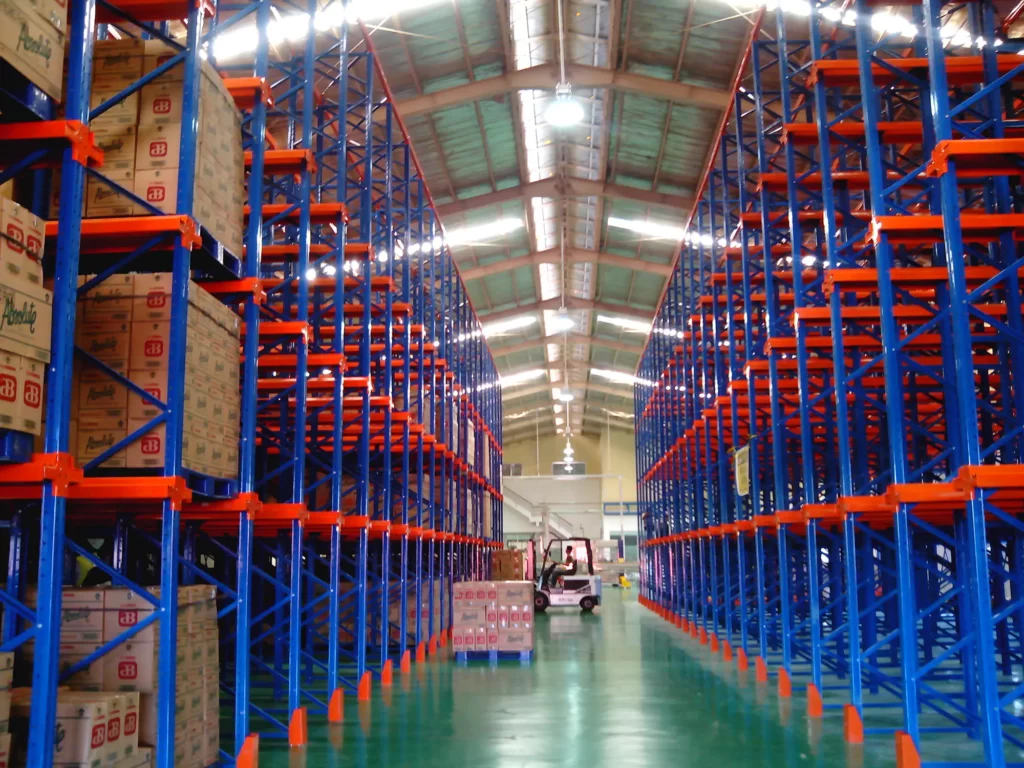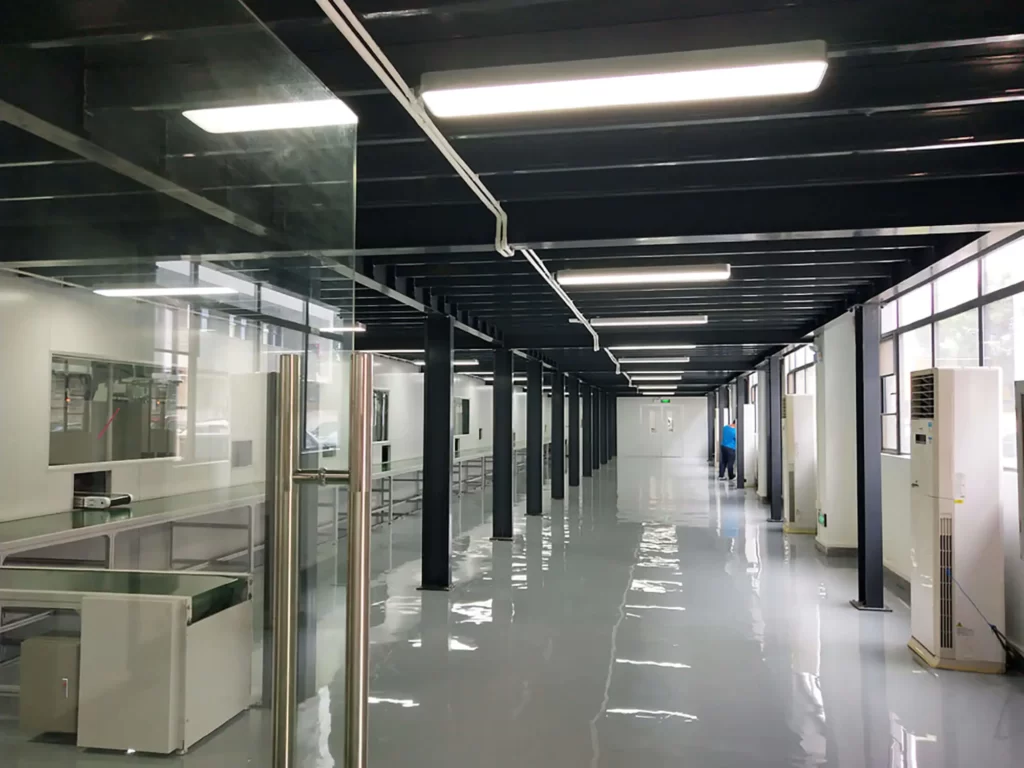Racking systems assist in a pallet storage system within your warehouse. Without proper care, they may become a problem. Do you know how to maintain the strength and safety of your racking system?
In this guide, we will discuss the importance of maintenance. You’ll also find out how to identify damages, as well as how to protect your racks to enhance their lifespan.
Figure 1: Racking Maintenance
1) Why Racking Maintenance Matters
Racking systems can hold stock. Over time, they can get damaged. Neglecting this problem can cause huge issues. In this section, we will discuss the reasons why the maintenance of racks is important:
Figure 2: Cause of Racking Damage
- Safety problems: In case your racks of off-shelf waste are broken, overloaded, or out of alignment, they can collapse without warning. This can injure personnel or damage stock. Safety risks can be avoided with regular maintenance
- Consider productivity: A damaged or unstable racking system causes everything to slow down. Employees may be required to stop workflows, perform item rerouting, or circumvent hazard areas. As a consequence, daily activities are poorly accomplished. Everything runs more smoothly when your racks are well-maintained.
- Legal compliances: Countries like Australia require that safety standards AS 4084 are observed in regard to warehouse storage systems. If you do not properly maintain your racks, on some level, you could be in trouble, especially if someone is injured. Thus, compliance is maintained via examinations and routine inspections.
2) Signs Your Racking Needs Maintenance
In order to maintain the safety of your storage system, you need to monitor for early signs of failure. Here we will discuss the elements that you need to monitor:
- Noticeable damages: Look for any signs of dents, bends, or rust holes. Finding any of these issues indicates that the rack is severely deteriorating and could fail soon.
Figure 3: Noticeable damages
- Misalignment: Racks that lean or are out of alignment are unstable. This could give way to a collapse while working with weighty loads.
- Loose or missing parts: Safety clips and bolts of the rack should be inspected. If any of these parts, which are bolts or safety clips, are loose or missing, then the safety rack will be unacceptably unsafe.
Figure 4: Loose or missing parts
- Overloading or incorrect loading: Load on racks does not exceed and items are arranged orderly. Too much weight or unorderly stacks can cause the racks to break.
3) Best Practices for Racking Care
Routinely upkeeping is important to keeping your racking system safe and well-supported. Now we will discuss practical tips for the maintenance of your racking system:
i) Daily, Weekly, and Monthly Check: Most importantly, set up an inspection timetable. Regular checkups allow you to discover small issues before they can exacerbate into bigger issues.
Figure 5: Regular Check
ii) Inspect Visually for Damage: After that, spend some time looking for possible scratches, dents, bends, rust, or leaning racks. Usually, these are indications that the structure is deteriorating.
iii) Check protection factor: Also, confirm that all safety clips, guards, and rack supports are in their functional locations. Safety features that are absent can cause accidents.
iv) Tighten Loose Bolts: All equipment requires some basic maintenance, such as checking if all bolts are fastened properly. Due to vibrations, movement, or general use, these bolts may have come loose, which can cause severe instability. All bolts should be checked regularly and tightened to prevent further instability.
v) Verify Load Labels: Confirm that maximum load capacity labels are appropriately positioned. If you disregard the weight limits, racks can fail under too much pressure.
vi) Maintenance Plan: Moreover, ensure the shelves and racks are dry and clean. Remember that dust and wetness cause rust that can ruin metal over time.
vii) Arrange for Professional Checks: Although your racks may look fine, having a professional inspect them at least once every year is a good idea. You may not notice hidden dangers, but they can.
Figure 6: Professional Checks
viii) Train Your Staff: Additionally, instruct your staff to spot and notify of damage. Properly trained personnel will assist in the safe management of the system on a daily basis.
ix) Use Rack Protection Tools: Apply corner guards as well as upright protectors to avoid damage caused by carts and forklifts. Such minor measures can save a great deal of repair costs.
x) Follow Safe Loading Procedures: At all times, observe the weight limitations for the rack. Confirm that all objects are piled up uniformly and that walkways are free from blockages.
xi) Keep Logs of Checks and Repairs: Lastly, record every inspection, repair made, and issue. This is good for your record-keeping and demonstrates compliance with other optional procedures.
4) Repair vs Replace: What’s the Right Call?
When you notice damage of some sort within your racking system, the problem becomes whether to replace it completely or fix what is already there. Here we will discuss some useful suggestions that can assist you.
Figure 7: Repair vs Replace
a) Evaluate the Level of Destruction
First of all, assess the overall extent of the damage. If it is merely a small dent or a few loose bolts, it is probable that you can fix it. However, if the rack is bent or leaning, then the danger is likely too high. The best option would be to replace it.
b) Compare the Cost and Protection
Think about the cost along with safety. Certainly, the repairs are less costly. But if they only fix part of the problem, your rack may experience failure later on. That might raise your costs later, which is bad. Replacement is better in this case.
c) Think About the Type of Fix
Some methods of repair are only short-term. They may fix the issue for now, but the solution is not long-term. Permanent repairs are more robust, but only if done correctly. It is better to remove a damaged component instead of attempting to make partial repairs.
d) Follow the Manufacturer’s guidance
Be sure to check to look at the guidelines given by the manufacturer of your racks. They almost always tell you the things that can be repaired and the things that need to be replaced. Irrespective of their instructions, one ends up disregarding the protection guidelines for the equipment and voiding the warranty.
Conclusion
In a nutshell, Regular maintenance of your racking systems is very crucial. First off, make sure your warehouse is safe. Then, regularly inspect them for any possible harm. Take care of small problems before they develop into larger ones, while any major issues need to be resolved with parts replacements.
Make sure you and your team complete the required training. Don’t ignore the protection guidelines. Lastly, schedule regular cleans and inspections of your racks. Your racks will be in better condition and more efficient on a daily basis.








